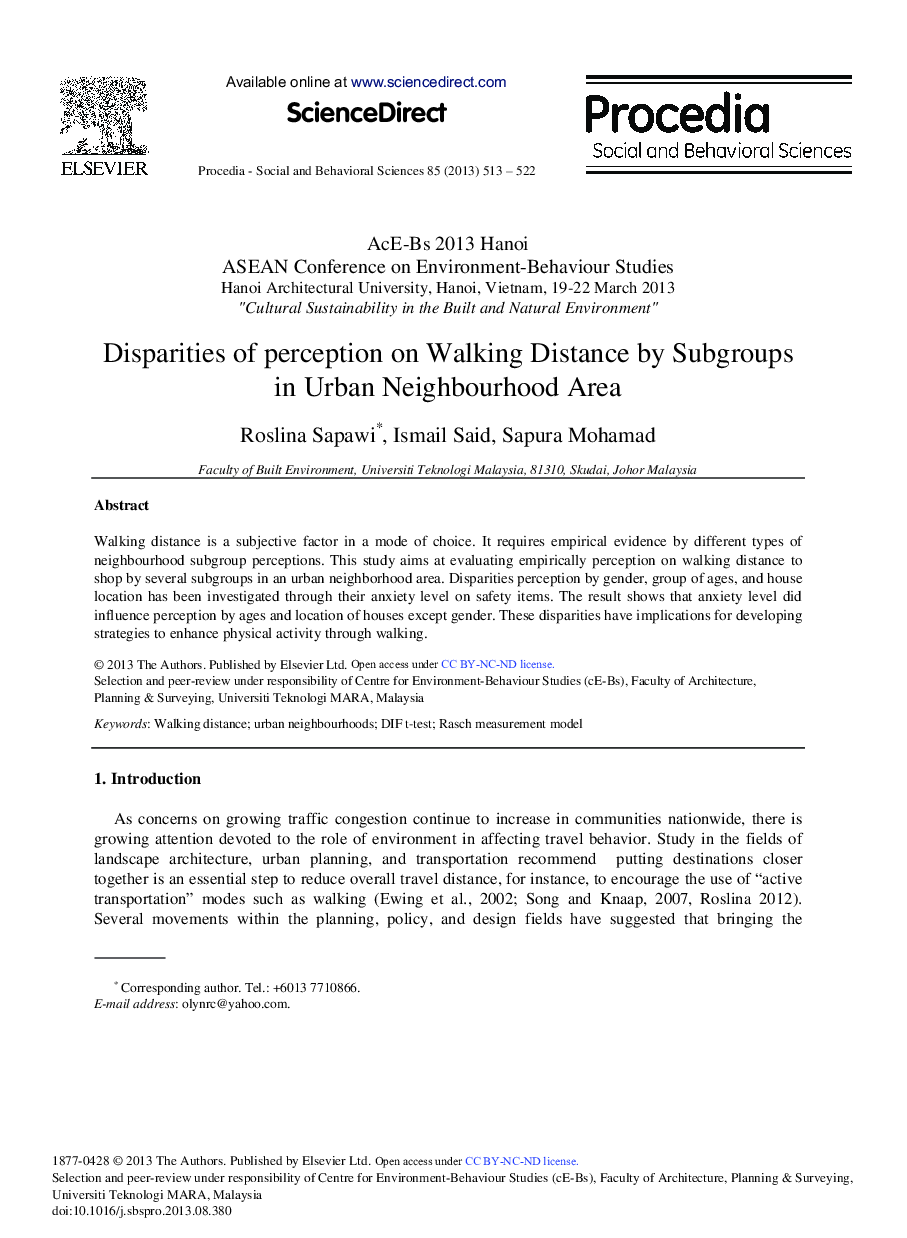| Article ID | Journal | Published Year | Pages | File Type |
|---|---|---|---|---|
| 1116992 | Procedia - Social and Behavioral Sciences | 2013 | 10 Pages |
Abstract
Walking distance is a subjective factor in a mode of choice. It requires empirical evidence by different types of neighbourhood subgroup perceptions. This study aims at evaluating empirically perception on walking distance to shop by several subgroups in an urban neighborhood area. Disparities perception by gender, group of ages, and house location has been investigated through their anxiety level on safety items. The result shows that anxiety level did influence perception by ages and location of houses except gender. These disparities have implications for developing strategies to enhance physical activity through walking.
Related Topics
Social Sciences and Humanities
Arts and Humanities
Arts and Humanities (General)
